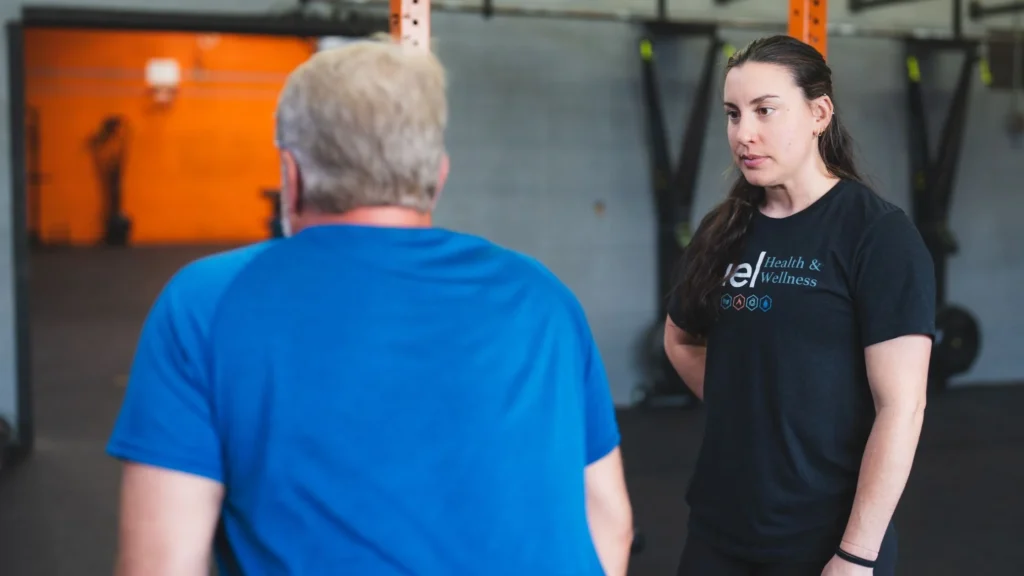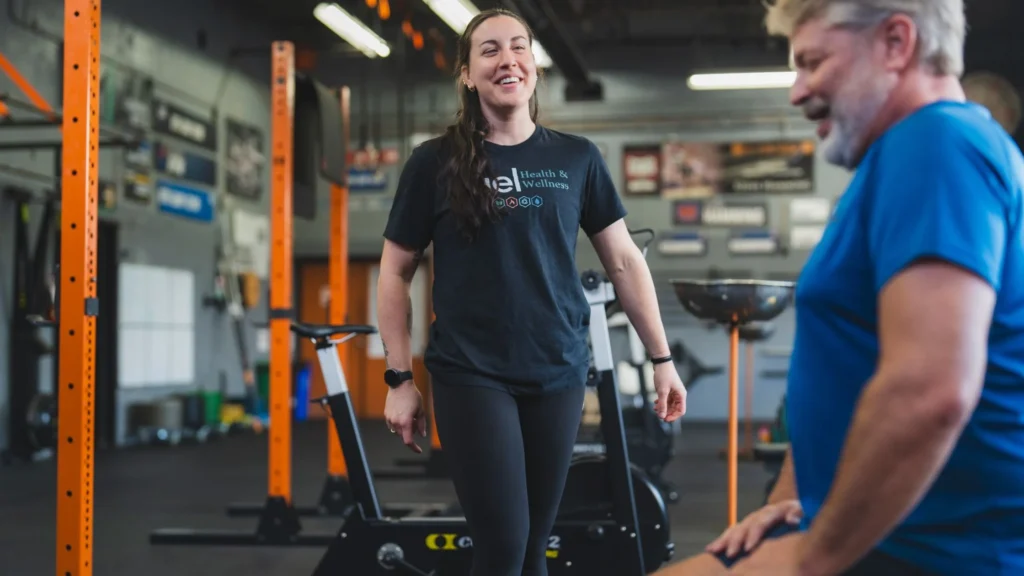Maintaining balance and preventing falls are crucial aspects of overall health, especially for individuals recovering from injuries or dealing with mobility challenges. Physical therapy plays a vital role in enhancing stability, coordination, and strength through targeted exercises and specialized techniques. By incorporating personalized rehabilitation plans, patients can improve their posture, muscle control, and reaction time, reducing the risk of falls. Whether addressing age-related concerns or post-injury recovery, professional therapy provides essential strategies to restore confidence in movement and promote long-term independence.
Key Takeaways
- A strong core and targeted exercises can significantly improve balance and stability, reducing fall risks.
- Incorporating resistance training, stability tools, and specific balance exercises like Tai Chi or yoga enhances the central nervous system’s coordination.
- Physical and occupational therapy provide customized approaches to balance improvement, identifying warning signs and tailoring programs to individual needs.
- A safe home environment, combined with proper education on balance issues, is essential in preventing injury and improving quality of life.
Strengthening Core Muscles to Improve Balance and Stability

Core muscle strength is pivotal in maintaining balance and stability. By engaging and developing the muscles in the torso, individuals can support their central nervous system more effectively and fuel health wellness, reducing unnecessary strain on the back and extremities. Core routines, when performed correctly and consistently, enhance postural stability by strengthening deep muscles that stabilize the spine. This initial phase is critical for weight management and decreasing the probability of falls as people age. For further inquiries or support, please contact us.
Identify Exercises Targeting the Core for Better Posture
Exercises that specifically target the core muscles—such as planks, bridges, and Pilates-based movements—are highly recommended for improving posture. These exercises not only increase the strength of the abdominal muscles but also encourage balanced muscle recruitment. For example, performing planks for sustained periods helps improve muscle endurance and supports optimal spinal alignment. Regular routines lead to more efficient neural communication between the muscles and the brain, thereby enhancing proprioception and balance. Studies have indicated that individuals who engage in core-strengthening exercises experience improvements in both static and dynamic balance. Additionally, these exercises can complement other physical therapy Grand Rapids routines aimed at reducing lower back pain, knee pain, and overall muscular imbalances. The emphasis on controlled and deliberate movements during these exercises greatly aids in promoting safer and more efficient daily motion. This, in turn, helps in preventing compensatory patterns that might lead to injury.
Incorporate Resistance Training for Muscle Development
Resistance training plays an essential role in developing the muscles required for improved balance and stability. By using weights or resistance bands, patients can stimulate muscle hypertrophy and enhance nerve conduction, which is central to coordinated movement. Progressive resistance training encourages the muscles to generate more force without relying solely on rapid movements, which is critical for efficient landing and weight-bearing activities. Incorporating exercises such as squats, deadlifts, and step-ups has shown measurable improvements in strength and functional mobility. These exercises not only develop muscle mass but also improve bone density, which is important for long-term skeletal health. Moreover, resistance training triggers the release of growth factors—especially in the central nervous system—that contribute to improved neuromuscular communication. As balance is a product of both muscular strength and neural efficiency, the benefits of resistance training extend beyond mere muscle development; they are integral to the prevention of falls and enhanced ability to respond to sudden shifts in body position.
Use Stability Tools Like Balance Balls and Discs
Stability tools such as balance balls, wobble boards, and balance discs are excellent adjuncts to traditional core and resistance exercises. These tools introduce an element of instability that challenges the brain and muscles to work together more effectively. Using a balance ball during exercises like seated pelvic tilts or performing push-ups on a wobble board forces the body to engage additional stabilizer muscles. This process stimulates the proprioceptive system, which is the body’s internal balance sensor, ultimately improving overall coordination. Clinical evidence supports that regular practice with these devices can enhance sensory integration and reduce the risk of falls by refining an individual’s reaction to unexpected perturbations. For individuals undergoing rehabilitation, these stability tools can be gradually introduced, beginning with shorter durations and progressing as balance improves. Customized programs may blend both equipment-based exercises and floor exercises to maintain engagement and continuously challenge the neuromuscular system. The added challenge helps promote improved static and dynamic balance so that even in complex or unpredictable environments, individuals maintain control over their movement patterns.
Implementing Balance Exercises to Reduce Fall Risks
Balance exercises are a cornerstone of any fall prevention program. They work by directly training the body’s ability to maintain and recover equilibrium during daily activities. Reducing fall risks involves not only strengthening muscles but also enhancing the body’s reaction to sudden loss of balance. Through regular practice, these exercises improve joint stability, neural responsiveness, and overall confidence during movement. They are particularly beneficial for older adults, who may naturally experience a decline in vestibular system function and central nervous system processing. When balance exercises are performed in a structured and progressive manner, improvements can be observed in both static balance (the ability to remain still) and dynamic balance (the ability to remain steady while moving). Data from controlled studies have shown that balance training programs can reduce the incidence of falls by up to 30% in high-risk populations.
Practice Single-Leg Stance Techniques Regularly
Single-leg stance exercises are one of the simplest yet most effective balance training methods. By standing on one leg, individuals force their body to activate various stabilizer muscles, particularly in the hip and calf regions. This exercise directly supports improved proprioception, as the body becomes more aware of its position in space. Beginning with near support, such as holding onto a chair, and advancing to unsupported stances, gradually builds both muscle strength and neural efficiency. The challenge increases further if individuals perform complementary tasks, such as reaching with the opposite hand or closing the eyes, which intensifies reliance on the vestibular system. Over time, patient confidence in performing everyday activities improves, and the risk of stumbling or falling reduces significantly. Moreover, single-leg exercises can be easily integrated into daily routines without the need for specialized equipment, making them accessible to a wide range of individuals. Consistent practice reinforces the pathway between the leg muscles and the central nervous system. This helps ensure rapid and effective muscular responses to sudden balance challenges.
Engage in Tai Chi for Enhanced Body Awareness
Tai Chi is recognized worldwide for its unique blend of physical exercise and mind-body connection. It is particularly effective in improving balance because it focuses on slow, deliberate movements that enhance body awareness and control. Tai Chi integrates deep breathing with flowing motions, thereby reducing stress and promoting a calm state that improves neural function. Regular practice has been shown to enhance the vestibular system’s efficiency and improve the proprioceptive feedback loop. In controlled trials, participants engaging in Tai Chi experienced noticeable reductions in fall risk along with improvements in overall balance and gait stability. The meditative aspect of Tai Chi also contributes to mental clarity and focus, which are essential for preventing missteps during daily activities. Furthermore, this exercise modality can be adapted to different fitness levels, making it suitable for both younger and older adults. Its holistic approach connects movement with mindfulness, ensuring a comprehensive enhancement of balance and coordination. Health experts continue to recommend Tai Chi as an effective, low-impact exercise that improves both physical and mental wellness while reducing musculoskeletal strain.
Integrate Yoga Poses to Develop Flexibility and Strength
Yoga is an ancient practice that promotes flexibility, strength, and body awareness—all key elements for achieving optimal balance. Specific poses such as the Tree Pose, Warrior series, and Chair Pose have been proven to bolster core stability and enhance proprioception. The controlled breathing techniques involved in yoga further relax the nervous system, reducing tension and enabling smoother, more coordinated movements. Incorporating yoga into a balance improvement program not only builds muscular strength but also encourages relaxation, which is essential for motor control. Yoga’s emphasis on alignment and posture reinforces the proper use of muscles, reducing the risk of injury from falls. Many individuals report improved balance and reduced feelings of unsteadiness after consistent yoga practice. Integrating these practices into a rehabilitation program can aid in overall steadiness and mobility, supporting long-term independence. The flexibility gained through daily yoga can also reduce joint stiffness, further contributing to the prevention of falls. By systematically incorporating a variety of poses, patients can target different muscle groups and improve their overall balance capacity, which in turn supports a safer and more active lifestyle.
Utilizing Physical and Occupational Therapy Techniques

Physical and occupational therapies are integral for individuals needing personalized strategies to improve balance. Licensed therapists evaluate patients’ needs through comprehensive assessments to develop targeted exercise plans. Using evidence-based techniques, these therapies enhance the central nervous system’s communication with muscles, leading to improved coordination, reduced pain, and an overall better sense of body equilibrium. Customization is key in therapy; each therapy session is adapted to the patient’s existing strengths and challenges. For patients with neurological impairments, physical therapy might incorporate gait training and postural stabilization exercises, while occupational therapy might focus on improving the performance of daily activities through adaptive techniques. These therapies also integrate technological tools and innovative balance boards that provide real-time feedback, making the rehabilitation process more effective. With regular monitoring by health experts, therapy sessions can be modified over time to provide progressively challenging exercises, ensuring continuous improvement in balance and mobility.
Schedule Assessments With Licensed Therapists for Guidance
Scheduling regular assessments with licensed therapists is crucial for those undergoing balance improvement programs. These assessments provide a professional evaluation of current balance capabilities, muscle strength, and proprioceptive function. Therapists often use standardized tests such as the Berg Balance Scale or Timed Up and Go Test to quantify progress and identify areas that require additional attention. Through these evaluations, patients receive personalized guidance on exercise progression and modifications tailored to their physical condition and recovery goals. Regular check-ups help in early detection of any decline in balance performance, ensuring timely intervention to prevent falls. Moreover, therapists can adjust therapy protocols based on real data collected during assessments, reinforcing proper technique and enhancing the overall effectiveness of the rehabilitation program. This proactive approach is essential in managing conditions such as vestibular dysfunction, neuropathy, or post-injury recovery where balance is compromised.
Learn Balance-Focused Activities Tailored to Individual Needs
Adopting balance-focused activities that are tailored to individual needs is an essential component of therapy. Therapists design exercises specific to the patient’s limitations and daily living scenarios. These activities may include modified yoga sequences, dual-task exercises that challenge both the mind and body, and simulated real-world scenarios that improve reaction times.
For instance, adaptations like seated balance exercises or water-based therapy sessions are particularly effective for individuals with severe balance limitations. Patients looking for convenient therapy options may find Access Telehealth Physical Therapy Services From Home in Grand Rapids useful in integrating these balance-focused interventions into their routine.
By incorporating these personalized activities into daily routines, patients not only improve their static and dynamic balance but also gain confidence in moving safely in various environments. This individualized approach ensures that therapy is both engaging and functional, directly addressing the unique risk factors associated with each patient’s condition. Consistent practice with customized balance exercises encourages neuroplasticity, leading to sustained improvements in balance and stability over time, thereby enhancing the individual’s overall quality of life.
Creating a Safe Home Environment for Fall Prevention
A safe home environment is critical for fall prevention, particularly for older adults or individuals with balance impairments. The home is where daily activities occur, and minimizing risks in this space can significantly reduce the likelihood of falls. This involves both organizing the space to remove hazards and implementing supportive modifications. Routine home assessments by professionals can help determine areas that need modification, such as cluttered hallways, slippery bathroom floors, or inadequate lighting. Installing grab bars, especially in the bathroom and near stairs, can provide essential support. Furthermore, using non-slip mats, securing loose rugs, and ensuring clear pathways in frequently used areas are practical measures to create a secure environment. These modifications not only prevent falls but also contribute to a greater sense of security and independence.
Remove Tripping Hazards From Frequently Used Areas
Removing tripping hazards involves a systematic review of the home environment. Common hazards include loose rugs, clutter, electrical cords, and uneven flooring. Homeowners are encouraged to keep areas well-lit and organized to reduce potential obstacles. Regular cleaning and maintenance play a vital role, as dirt and small objects can become significant hazards over time. Additionally, arranging furniture in a way that allows for clear and wide pathways can further mitigate the risk of trips and falls. For example, ensuring that frequently used areas like the kitchen, living room, and entryways are free from debris enhances safety. This proactive strategy is especially important for individuals with weakened muscle strength or impaired vision, as even minor obstacles can lead to serious injuries. By carefully assessing and modifying the living environment, individuals can create a safer space that supports their balance and overall well-being.
Install Grab Bars in Bathrooms for Support
Bathrooms are one of the most accident-prone areas in a home, making the installation of grab bars essential for fall prevention. Grab bars provide a secure point of support, especially when navigating wet or slippery surfaces. Health professionals recommend positioning grab bars near the toilet, in the shower, and around the bathtub. These supports not only reduce the risk of falls but also assist in maintaining proper posture when entering or exiting these areas. In addition to grab bars, anti-slip mats or adhesive strips can be applied to the floor to further improve traction. Studies indicate that homes with these safety features experience significantly lower fall rates, underscoring the importance of such modifications. Ensuring that grab bars are mounted correctly and can support weight is a critical part of home safety assessments. For individuals recovering from injuries or surgeries, these supportive measures contribute directly to a safer and more confidence-inspiring environment.
Educating Patients on Warning Signs of Balance Issues
Education is a cornerstone in preventing falls and addressing balance issues. Patients must be aware of the early warning signs that indicate changes in balance, such as dizziness, frequent stumbling, or decreased coordination. By understanding these symptoms, individuals can seek timely interventions, reducing the risk of severe injuries. Educating patients involves regular discussions during therapy sessions, distribution of informational brochures, and the use of interactive tools that explain the function of the vestibular system. Emphasis on self-monitoring and reporting minor changes in balance can lead to early detection of potential hazards. In a clinical setting, education sessions also include preventive measures that patients can adopt on a daily basis. This educational approach empowers individuals to take an active role in managing their health, thus enabling tailored interventions that address both minor and significant balance impairments.
Recognize Symptoms That Indicate Changes in Balance
Recognizing symptoms is critical for early intervention. Patients are advised to note any sudden or gradual changes in balance, such as episodes of dizziness after standing, an increased tendency to sway, or slower reaction times during movement. Such symptoms may indicate underlying neurological issues or muscle weakness. Educators often stress the importance of maintaining a symptom journal to track changes over time. This self-monitoring not only helps in identifying potential problems early but also provides valuable information for healthcare professionals when adjusting treatment plans. Recognizing symptoms early allows for the implementation of targeted exercises or modifications to therapy sessions, ensuring that balance issues are addressed before they lead to falls or injuries. Timely recognition and response to these warning signals are pivotal in preserving long-term mobility and independence.
Encourage Discussions About Balance-Related Concerns
Creating an open dialogue about balance-related concerns helps remove the stigma associated with falling and balance loss. Healthcare providers encourage patients to openly discuss any fear or hesitation they may have regarding mobility. This communication is vital during regular therapy sessions or routine check-ups, as it enables therapists to adjust treatment plans in real-time. Group sessions or workshops focusing on balance improvement can also foster community support, alleviating anxiety by sharing similar experiences with peers. Moreover, discussing these concerns can highlight the importance of lifestyle changes—such as improved nutrition, specific exercise regimes, and adaptive home modifications—that collectively enhance balance. By fostering a supportive environment, individuals feel more confident in addressing balance issues, leading to better adherence to prescribed therapy routines and ultimately reducing fall risks.
Monitoring Progress in Balance Improvement Programs
Tracking improvement is essential to ensure that balance improvement programs are effective and tailored to individual needs. Monitoring progress involves setting measurable goals and using standardized assessments to evaluate advancements. Regular recording of balance-related activities, completed exercises, and any changes in symptoms allows therapists to adjust interventions as needed. Documenting milestones not only provides accountability but also motivates patients by visibly showing their progress over time. Objective measures, such as the improvement in single-leg stance duration or reduced times in the Timed Up and Go Test, can be instrumental in refining therapy sessions. This continuous monitoring helps maintain a high standard of care while effectively reducing fall risk. By combining subjective patient feedback with objective performance metrics, therapists can create dynamic exercise programs that evolve with the patient’s recovery trajectory.
Set Specific Milestones to Evaluate Improvements
Establishing specific, quantifiable milestones is a critical strategy in balancing improvement. These milestones provide clear targets, such as increasing the duration of a single-leg stance by 10 seconds or achieving a specific score on balance assessment scales. Setting such goals facilitates both short-term achievements and long-term progress tracking. Therapists work with patients to create realistic and personalized objectives, considering their current functional level and potential for improvement. Regular milestone assessments help identify areas where progress is consistent or where further intervention may be necessary. Recording these milestones in a detailed log or digital application makes it easy to analyze trends and adapt the therapy program accordingly. This approach ensures that improvements in balance are not only maintained but also built upon gradually, leading to a continuous enhancement of stability and mobility.
Record Activities to Measure Consistent Practice
Recording daily activities and exercise adherence is fundamental in evaluating the consistency of balance improvement routines. Keeping a journal or using specialized mobile applications to log workouts, therapy sessions, and even incidental balance challenges during daily life can be very informative. This record-keeping allows both patients and therapists to see trends over time and adjust programs based on consistent practice outcomes.
At Fuel Health Wellness, we emphasize the importance of structured tracking and provide expert guidance to ensure meaningful rehabilitation progress. Detailed notes on frequency, duration, and the types of exercises performed, along with any subjective experiences of improved confidence or reduction in dizziness, create a comprehensive picture of progress. Such documentation is valuable in demonstrating tangible improvements during follow-up assessments and serves as motivation to continue engaging in healthy practices. Consistent tracking supports the goal of an evidence-based approach to rehabilitation, ensuring that each session contributes meaningfully to the overall balance and stability of the patient.Frequently Asked Questions
How does core strengthening improve balance?
Core strengthening improves balance by stabilizing the spine and enhancing communication between the muscles and the central nervous system. Exercises like planks and bridges increase postural control and prevent falls.
What role does Tai Chi play in fall prevention?
Tai Chi enhances body awareness and improves the vestibular system function. Its slow, controlled movements increase muscle coordination and reduce fall risks, making it effective for older adults.
Why is a safe home environment important for balance?
A safe home environment minimizes hazards like loose rugs and clutter, greatly reducing fall risks. Simple modifications, such as installing grab bars and clearing pathways, are crucial preventive measures.
How can physical therapy help with balance issues?
Physical therapy offers personalized exercise programs and regular assessments to address balance issues. Therapists design customized routines and monitor progress, ensuring consistent improvements in stability.
Which balance exercises are best for fall prevention?
Effective exercises include single-leg stances, Tai Chi, yoga, and core workouts. These exercises target muscle strength, coordination, and proprioception, all of which are essential for preventing falls.


